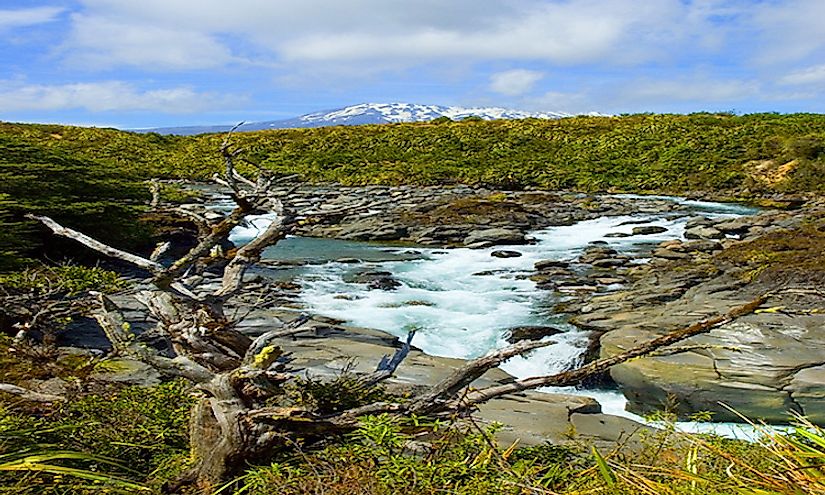UNESCO World Heritage Sites In New Zealand

New Zealand’s landscapes prominently feature glaciation, volcanoes, homelands and Sub-Antarctic seabird habitats. Centuries of New Zealand’s isolation are witnessed through the country’s unique and unmatched landscapes and in the endemic flora and fauna present the country. Different sites have been named by UNESCO as World Heritage Sites in New Zealand.
UNESCO World Heritage Sites In New Zealand
Sub-Antarctic Islands Of New Zealand
The Sub-Antarctic Islands of New Zealand is a natural heritage site listed in 1998. The site comprises of five uninhabited islands scattered across the Southern Ocean. The islands are the Auckland Islands, Antipodes Islands, Bounty Islands; Campbell Island and the Snares. Boasting a volcanic origin are the Auckland, Campbell and Antipodes Islands. The Bounty Islands are entirely made of granite basement rocks. The islands exhibit a high level of biodiversity and support numerous endemic plants and animals. The islands are crucial as breeding and nesting places for various marine mammals and seabirds and are by themselves nature reserves. The islands are home to about 120 bird species, 40 of them are seabirds with eight being endemic. Avifauna species include shags, penguins, albatross, ducks, tern, snipes, and gull. Other notable species include the Hooker’s sea lion, New Zealand fur seal, and the Southern Whale which breeds in the islands’ waters. The islands are highly protected by the government, with their isolation further affording them protection. The New Zealand Department of Conservation oversees their conservation and regulates tourism. The islands are a popular tourist destination and bird and wildlife watching, and photography is favorite activities. The islands are however threatened by introduced mammal species and fishing activities.
Te Wahipounamu
Te Wahipounamu was listed as a natural World heritage site by UNESCO in 1990. The site covers several national parks in the southwest of New Zealand, namely Westland; Mt Aspiring; Aoraki/ Mt Cook and Fiordland National Parks. The site is characterized by various landscapes, from intact forests, grasslands, snow-capped mountains, glaciated valleys, coastal fiords, and towering cliffs to waterfalls. The site is geologically and biologically significant, representing tectonic, glacial and climatic processes which have shaped the earth. Nearly two-thirds of the property is covered with mature podocarps and southern beech, some of which have inhabited the area for the last 800 years. The site exhibits ancient geology and landforms which existed before New Zealand’s drift from the super-continent of Gondwanaland. Present on the site is the takahe, a rare flightless bird, the kea penguins, kiwis, parakeets, red deer and fur seals. The property is one of the most visited sites in New Zealand, and favorite activities include boat safaris, hiking, scenic flights, and wildlife watching. The property is also a significant region for the Ngai Tahu tribe, representing their ancestral territories. The site’s preservation is managed by the Department of Conservation and introduced mammal species present is the biggest threat to the property’s integrity.
Tongariro National Park
The Tongariro National Park is a mixed heritage site in New Zealand, listed in 1990. The park is home to three active volcanic mountains of Tongariro, Ruapehu, and Ngauruhoe. The site also recognizes the cultural and spiritual significance of the mountains and the environment to the Maori people. The local Ngati Tuwharetoa iwi, in 1886, established reserves in the mountains and named them by local chiefs to prevent their purchase by the Europeans. In 1887, the Maori Chief Te Heuheu Tukino gifted the three mountains to the Crown, in faith that a nature reserve would be established. The site’s landscape includes crater lakes, forests and old lava flows. Popular tourist activities in the park include hiking, skiing, hunting, leisure fishing, rafting, scenic flights and mountain biking. The famous Tongariro Alpine Crossing attracts high tourist traffic. Notable fauna includes the red deer, short and long-tailed bat and possums.
Eco-tourism in New Zealand
New Zealand’s natural resources are famous world Eco-tourism landscape. New Zealand has championed sustainable tourism, where flora and fauna and natural landscapes are observed with no interference to their ecosystem. The government continues to address sustainability concerns such as overfishing, the introduction of mammal species, land transformation for agriculture, and tourism are some of the impacts to the heritages sites in New Zealand.
UNESCO World Heritage Sites In New Zealand
| UNESCO World Heritage Sites in New Zealand | Year of Inscription; Type |
| Sub-Antarctic Islands of New Zealand | 1998; Natural |
| Te Wahipounamu | 1990; Natural |
| Tongariro National Park | 1990; Mixed |











